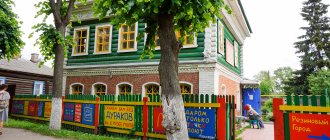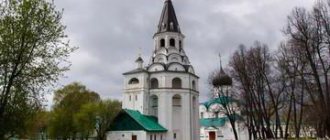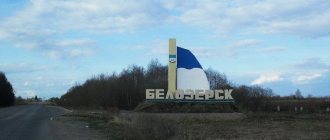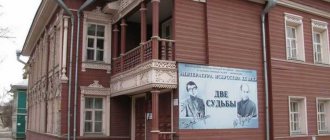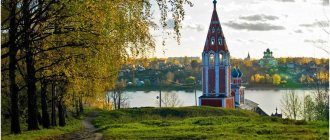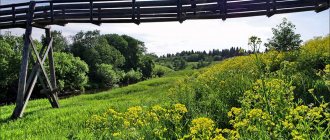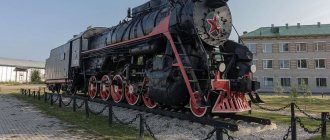Pereslavl-Zalessky is a regional center in the Yaroslavl region, located halfway along the highway from Moscow to Yaroslavl. The city is part of the “Golden Ring of Russia” and is widely known thanks to its numerous monuments of ancient architecture. Pereslavl-Zalessky is one of the oldest cities in Central Russia. The city was founded by Prince Yuri Dolgoruky in 1152. For a number of years, Pereslavl was the capital of a vast principality. The outstanding statesman and commander Alexander Nevsky was born, lived and reigned here. At the beginning of the 14th century, the Pereslavl principality became part of the Moscow principality. The further fate of Pereslavl is closely connected with the fate of Moscow.
Pereslavl-Zalessky history.
The city was repeatedly ravaged by enemy troops, burned, but was rebuilt and strengthened again. The Great Dukes and Tsars Ivan III, Vasily III, and Ivan the Terrible visited Pereslavl more than once, and at times even lived. According to their decrees, fortifications and temples were erected in the city and its environs. In 1612, a militia under the leadership of Kozma Minin and Dmitry Pozharsky stopped in Pereslavl. At the end of the 17th century, near Pereslavl on the shore of Lake Pleshcheevo, the young Tsar Peter I began building the so-called “amusing flotilla”, which laid the foundation for the Russian navy.
Rybnaya Sloboda
Interesting places in Pereslavl are not only churches and monasteries; there are also quite secular attractions.
The Principality of Pereslavl was mentioned when the title of the Grand Duke of Moscow was given back in the middle of the 16th century. However, right in the middle of the capital of this principality there was an extraterritorial enclave, directly subordinate to Moscow. It was called Rybnaya Sloboda. The fishermen enjoyed great freedom, and their only responsibility was the fish rent - supplying fish to the table of the Grand Duke. It is clear that the Grand Duke could have gotten bream or pike closer. The Pereslavl fish settlement sent “Pereslavl herring” to Moscow, a type of vendace that is found only in Lake Pleshcheyevo.
The fishermen, judging by their houses, popular among photographers, were not poor. The size of the catch fluctuated greatly from year to year, but in response to a decrease in supplies, punitive expeditions were not sent from Moscow and shortfalls were not counted as a debt for the next year. Moreover, at the end of the 17th century, already under Peter I, Pereslavl fishermen knocked out a standard for themselves - 45,000 vendace per year, and what is more is counted for the future. How much the clerk who signed the agreement took from them will remain unknown. But the size of deliveries in the next year, 1693, is known. The people of Pereslavl sent 368,000 vendace to Moscow, thereby paying off Moscow until the end of the century.
Church of the Forty Martyrs
The fish settlement is located at the mouth of the Trubezh River. For a long time, on the banks of the river in this place there were two churches: the Presentation of the Blessed Virgin Mary, which belonged to a convent, and the parish Church of the Forty Martyrs. At the beginning of the 18th century, both churches fell into disrepair. The monastery church was simply written off, but the fisherman’s church was restored and rebuilt. Now in the photograph of Pereslavl-Zalessky with the surface of the water and the red and white temple on the shore, we are very likely to see the Church of the Forty Martyrs.
This temple is a typical Russian “ship”: altar - refectory - passage - bell tower. At the same time, the temple was placed on a fairly narrow strip of land, creating a feeling of readiness for launching. Like most churches in Pereslavl-Zalessky, the restored Church of the Forty Martyrs looks better on the outside than on the inside. However, it is difficult to demand that a building in which boats and fishing gear were stored for half a century turn into a luxurious temple with a five-level gilded iconostasis and an abundance of frescoes and mosaics in 20 years. The main thing is that the temple is functioning, and decorations will be added.
Pereslavl-Zalessky history.
In 1283, on the high left bank of the Volga, a fortress city was founded, named by Romanov. According to one version, its founder was the Uglich prince Roman Vladimirovich, who reigned from 1261 to 1285. Opposite the Borisoglebskaya Sloboda, he noticed the advantageous position of one of the hills, near which there were transports across the Volga and roads leading to the Trans-Volga north, rich in sables, flax, and honey, converged.
Pereslavl-Zalessky in the XVIII-XIX centuries.
In the 18th century, the first manufactories appeared in the city, and stone residential, commercial and industrial buildings were built. The last century has changed Pereslavl little. Situated off the road, the city grew slowly and hardly developed. At the end of the 19th century, the first strikes took place in Pereslavl factories - the revolutionary struggle of workers began. Today's Pereslavl-Zalessky is the regional center of the Yaroslavl region, a city of chemists and textile workers. On the outskirts of the city, blocks of new multi-storey buildings grew, schools, kindergartens, hospitals, and nurseries were built.
Construction
The proximity to the capital has determined another popular destination among those who often visit this city. This is the construction of dachas within the boundaries of Pereslavl-Zalessky, in its immediate vicinity or in the Pereslavl region.
It is worth noting that the city itself is quite small. About 40 thousand people live here permanently. Moreover, by the beginning of the 2000s, approximately the same number existed in the area of dacha farms. Of course, their owners were predominantly residents of Moscow and the Moscow region, where the level of earnings is much higher than in the Yaroslavl region.
Attractions. Transfiguration Cathedral.
The Transfiguration Cathedral is the oldest temple in Pereslavl-Zalessky. It was founded by Yuri Dolgoruky in 1152, approximately at the same time as other cathedrals founded by the Grand Duke in Vladimir, Kideksha and Yuryev-Polsky.
Of all the buildings of Yuri Dolgoruky, the Transfiguration Cathedral in Pereslavl has retained the closest appearance to its original appearance. The white-stone cathedral is small in area; it was built for a small number of worshipers: the prince’s associates, warriors, and city nobility. The cathedral was not erected in the city center, but near the ramparts, near the Spasskaya passage tower, which has not survived to this day. The Cathedral of the Transfiguration is built of white stone blocks; between the outer and inner walls there is a rubble layer - crushed stone and construction waste filled with mortar. Thanks to this method of construction, the cathedral still stands today. During Soviet times, services in the cathedral were stopped. To this day, the ancient building of the Transfiguration Cathedral remains a museum, although services are held in it from time to time. (Address: Red Square)
Map
| Pereslavl-Zalessky: maps |
Pereslavl-Zalessky: photo from space (Google Maps) Pereslavl-Zalessky: photo from space (Microsoft Virtual Earth)
| Pereslavl-Zalessky. Nearest cities. Distances in km. on the map (in brackets along roads) + direction. Using the hyperlink in the distance , you can get the route (information courtesy of the AutoTransInfo website) | |||
| 1 | Balakirevo (Vladimir region) | 25 (90) | YU |
| 2 | Alexandrov | 37 (72) | YU |
| 3 | Petrovskoe | 39 (43) | NE |
| 4 | Strunino | 42 (88) | SW |
| 5 | Karabanovo | 47 (83) | YU |
| 6 | Bogorodskoye (Moscow region) | 48 () | SW |
| 7 | Krasnozavodsk | 49 (78) | SW |
| 8 | Peresvet | 53 (85) | SW |
| 9 | Remmash (Moscow region) | 56 (71) | SW |
| 10 | Skoropuskovsky (Moscow region) | 57 () | SW |
| 11 | Yuriev-Polsky | 57 (69) | SE |
| 12 | Kolchugino | 58 (99) | SE |
| 13 | Ishnya | 59 () | NE |
| 14 | Rostov | 60 (65) | NE |
| 15 | Ilyinskoye-Khovanskoye (Ivanovo region) | 61 (100) | NE |
| 16 | Borisoglebsky | 61 (83) | WITH |
| 17 | Kirzhach | 64 (109) | YU |
| 18 | Sergiev Posad | 65 (70) | SW |
| 19 | Fryanovo (Moscow region) | 71 (129) | YU |
| 20 | Semibratovo | 75 (78) | NE |
| 21 | Khotkovo | 75 (81) | SW |
| 22 | Verbilki (Moscow region) | 79 (112) | Z |
| 23 | Gavrilov Posad | 79 (115) | IN |
| 24 | Stromyn (Moscow region) | 80 () | YU |
| 25 | Taldom | 80 (137) | Z |
| 26 | Krasnoarmeysk | 81 (136) | SW |
| 27 | Kalyazin | 82 (213) | NW |
| 28 | Ashukino (Moscow region) | 83 (101) | SW |
| 29 | Chernogolovka | 86 (135) | YU |
| 30 | Gavrilov-Yam | 87 (105) | NE |
| 31 | Sofrino (Moscow region) | 87 (98) | SW |
a brief description of
Located in the northeastern part of the Klinsko-Dmitrovskaya ridge, on the southeastern shore of Lake Pleshcheyevo, at the confluence of the river. Trubezh, 21 km from the railway. Berendeevo station, 124 km southwest of Yaroslavl.
Pereslavl-Zalessky is included in the “Golden Ring of Russia” tourist route.
Territory (sq. km): 22
Information about the city of Pereslavl-Zalessky on the Russian Wikipedia site
Historical sketch
Founded in 1152 by Prince Yuri Dolgoruky under the name Pereslavl as a fortified point on the border of the Rostov-Suzdal principality. The oikonym was transferred from the land of Kyiv, where the city of Pereyaslavl was mentioned already in 907.
In 1175-1302 the center of the Pereyaslavl (Zalessky) principality, then became part of the Moscow principality and became one of the transit and trading points on the road from Moscow to Arkhangelsk.
From the middle of the 13th century. until the beginning of the 15th century. repeatedly destroyed by the Mongol-Tatars.
From the 15th century the name Zalessky is added to the name Pereslavl, i.e. located in Zalesye - this is how the Rostov-Suzdal principality was called in Ancient Rus'. In the 15-16th centuries. the patrimony of the Moscow princes. From the middle of the 16th century. the city flourished thanks to significant financial donations from Ivan the Terrible.
In 1611-12 suffered greatly from the Polish invaders.
In 1688-1693. On Lake Pereslavl (Lake Pleshcheyevo) Peter I, who repeatedly visited Pereslavl-Zalessky, built a training “amusing” flotilla.
From the middle of the 18th century. In Pereslavl-Zalessky, linen and paper manufactories began to develop.
Since 1708 it has been a city in the Moscow province, since 1719 it has been a provincial town in the Moscow province. Since 1778 - a district town of the Vladimir governorship (since 1796 Vladimir province).
In the middle of the 18th century. Manufacturing production arose in the city: a cotton factory and other enterprises were created.
In 1856, in the district town of Pereslavl-Zalessky, Vladimir province, there were 28 churches, 1050 houses, 129 shops.
In the materials of the 1897 population census it is called Pereyaslav.
Municipal indicators
| Index | 2001 |
| Demography | |
| Number of births, per 1000 population | 8.1 |
| Number of deaths, per 1000 population | 16.7 |
| Natural increase (decrease), per 1000 population | -8.6 |
| Standard of living of the population and social sphere | |
| Average monthly nominal accrued wages, rub. | 2847 |
| Average housing area per inhabitant (at the end of the year), sq.m. | 20.1 |
| Number of preschool institutions, pcs. | 12 |
| Number of children in preschool institutions, thousand people | 1.5 |
| Number of daytime educational institutions (at the beginning of the school year), pcs. | 11 |
| Number of students in daytime educational institutions, thousand people | 5.8 |
| Number of doctors, people. | 159 |
| Number of nursing staff, people. | 350 |
| Number of hospital institutions, pcs. | 1 |
| Number of hospital beds, thousand units | 0.45 |
| Number of medical outpatient clinics, pcs. | 4 |
| Capacity of medical outpatient clinics, visits per shift, thousand units. | 1.2 |
| Number of registered crimes, pcs. | 929 |
| Persons who committed crimes were identified, persons. | 910 |
| Economy, industry | |
| Number of enterprises and organizations (at the end of the year), pcs. | 810 |
| Construction | |
| Volume of work performed by type of activity “Construction” (until 2004 - volume of work performed under construction contracts), million rubles. | 101.9 |
| Commissioning of residential buildings, thousand sq.m. of total area | 3.6 |
| Commissioning of residential buildings, apartments | 39 |
| Commissioning of preschool institutions, places | 0 |
| Commissioning of educational institutions, places | 0 |
| Commissioning of hospital facilities, beds | 0 |
| Commissioning of outpatient clinics, visits per shift | 0 |
| Transport | |
| Number of bus routes (in intracity traffic), pcs. | 4 |
| Number of passengers transported by buses per year (in intracity traffic), million people. | 10.6 |
| Connection | |
| Number of residential telephone sets of the city public telephone network, thousand units. | 6.3 |
| Trade and services to the population | |
| Retail trade turnover (in actual prices), million rubles. | 540.3 |
| Retail trade turnover (in actual prices), per capita, rub. | 12114 |
| Public catering turnover (in actual prices), million rubles. | 17 |
| Volume of paid services to the population (in actual prices), million rubles. | 167.8 |
| Volume of paid services to the population (in actual prices), per capita, rub. | 3779 |
| Volume of household services to the population (in actual prices), million rubles. | 13.9 |
| Volume of household services to the population (in actual prices), per capita, rub. | 312 |
| Investments | |
| Investments in fixed assets (in actual prices), million rubles. | 167.6 |
| Share of investments in fixed assets financed from budgetary funds in the total volume of investments, % | 4.2 |
Data sources:
- Regions of Russia. Main characteristics of the constituent entities of the Russian Federation: statistical collection. Goskomstat of Russia. - M:, 2003.
Economy
Cotton spinning factory, PA "Slavich" (production of magnetic tape, photographic paper, etc.). Factories: stitching, sewing, furniture. Car repair and brick factories. Food industry enterprises.
Main enterprises
CHEMICAL-PHOTOGRAPHIC INDUSTRY
JSC "Botik", Gorki-Pereslavskie.
Universities of the city
Institute of Software Systems - "University of the City of Pereslavl" named after.
A.K. Ailamazyan 152020, Yaroslavl region, Pereslavl-Zalessky, Sovetskaya st., 2 WWW: https://u.pereslavl.ru/
Museums, galleries, exhibition halls
Historical estate "Botik of Peter I" 152140, Yaroslavl region, Pereslavl-Zalessky, village.
Veskovo Phone(s): (48535) 2-2788 2-1910 Website: https://museumpereslavl.ru/ Pereslavl-Zalessky State Historical, Architectural and Art Museum-Reserve 152024, Yaroslavl region, Pereslavl-Zalessky, Museum lane, 4 Phone(s): (48535) 2-3124 3-81-00 Website: https://museumpereslavl.ru/
Architecture, sights
Pereslavl-Zalessky stretches along the Moscow - Rostov Yaroslavsky road (now Yaroslavl Highway), which has become its main street.
In the center of the city, the earthen ramparts of an ancient fortification have been preserved, in the ring of which is the Spaso-Perobrazhensky Cathedral (1152, completed in 1157-60).
Ensembles of Fedorovsky (founded in the 15th century), Danilovo-Troitsky (founded in 1508), Goritsky (founded in the 15th century), Nikitsky (16th century) monasteries.
Near Pereslavl-Zalessky there is the Shalyapinka estate, which belonged to F.I. Shalyapin.
| Population by year (thousands of inhabitants) | |||||||
| 1856 | 5.4 | 1970 | 30.1 | 2006 | 42.7 | 2016 | 39.5 |
| 1897 | 10.6 | 1979 | 37.5 | 2007 | 42.4 | 2017 | 39.1 |
| 1913 | 12.8 | 1989 | 42.3 | 2008 | 42.3 | 2018 | 38.6 |
| 1923 | 12.7 | 1992 | 43.4 | 2010 | 42.2 | 2019 | 38.3 |
| 1926 | 13.4 | 1996 | 44.8 | 2011 | 41.9 | 2020 | 37.9 |
| 1931 | 15.2 | 2000 | 44.9 | 2012 | 41.3 | 2021 | 37.4 |
| 1939 | 19.9 | 2001 | 44.7 | 2013 | 40.9 | ||
| 1959 | 23.1 | 2003 | 43.4 | 2014 | 40.3 | ||
| 1967 | 27 | 2005 | 42.9 | 2015 | 40.0 | ||
St. Vladimir's Cathedral.
The Vladimir Cathedral (1740s) was built in the Bogoroditsko-Sretensky nunnery at the expense of the merchant Philip Fadeevich Ugryumov. After the abolition of this monastery in 1764, the church became a parish. At the beginning of the twentieth century, the spacious and rebuilt Vladimir Cathedral was turned into the main city church, and therefore received the nickname New among the townspeople (in contrast to the Old - this was the name of the ancient Transfiguration Cathedral). The appearance of the Vladimir Cathedral is quite unusual - a tall building with very closely spaced domes on high drums, one triangular apse with two tiers of windows, a narrow and high dome under the central drum. The latter is very large compared to the side ones, which also gives the appearance of the temple originality.
In 1933, the cathedral bell tower, which was a round tower, was demolished along with the stone fence surrounding the temple. It stood between the Vladimir and Alexander Nevsky churches, approximately at the place where the expanded Yaroslavl highway now passes. After 1929, the Vladimir Cathedral was given over to the city House of Sports, later converted into a bakery, and a bread store was opened in the altar. Nowadays, the cathedral has been almost completely restored and is functioning again. (Address: Sovetskaya st., 12)
Church of Alexander Nevsky.
The Church of the Blessed Prince Alexander Nevsky (1740s) was built at the expense of the Pereslavl merchant Philip Fadeevich Ugryumov (Ugrimov) in conjunction with the neighboring Vladimir Church. Both churches belonged to the Bogoroditsko-Sretensky (Sretensko-Vladimir Novodevichy) Monastery, located on the Red Square of the city, near the Transfiguration Cathedral. Soon after the construction of new churches, the monastery was abolished, and the churches were made parish.
All that remains of the monastery is a part of the wall with a gatehouse. Until the 1930s, there was a high bell tower between the churches; it was dismantled during the reconstruction of the Yaroslavl highway. The Alexander Nevsky Church has many common architectural features with the Vladimir Cathedral; They were probably built not only at the same time, but also by the same masters. The temple has large onion domes set on narrow, tall drums, making the temple appear squat than it actually is. Tall and beautiful carved crosses are placed on the bulbs. The semicircular vault of the main volume of the temple is raised high, the facades are practically devoid of decoration. The main quadrangle of the temple has two rows of windows; the building was planned to be light, but later part of the window openings of the lower tier was blocked up. The apse also has wide and tall windows with semicircular endings. The refectory windows are rectangular, but their upper part is decorated with small semicircles.
During Soviet times, the temple continued to operate for some time, remaining under the jurisdiction of the church community. In November 1925, the temple was robbed; thieves stole valuables from the 17th-18th centuries. Since the 1930s, the central city library was established in the temple. Later, the situation worsened - a bread store was made in the altar (the neighboring Vladimir Cathedral was used as a bakery), and in the rest of the building there was a garage of Lespromkhoz. The interior of the church was almost completely lost. A commission that visited Pereslavl-Zalessky in 1936 decided to preserve both churches as part of the interesting architectural ensemble of Red Square. In the early 1990s, the Alexander Nevsky Church was returned to believers, and now services are held there. (Sovetskaya st., 12)
Dachas
Having your own dacha in the Pereslavl region has long been a sign of good form. Most of those who moved to Pereslavl-Zalessky strive to build a small house for country living. In the reviews, they note that such housing should be chosen carefully and carefully.
Recently, companies have become more active and are building entire villages and lines of houses in open fields or in forests, where it is not so easy to lay communications necessary for comfortable living.
Therefore, many prefer to choose from those options that are part of various dacha societies and partnerships.
Dachas intended for partial or permanent residence are an excellent opportunity to spend weekends in nature in comfortable living conditions. Most of these holiday villages have all the necessary infrastructure, which includes electricity, gas, and even in some cases running water. Of course, the roads in such settlements leave much to be desired, only if local residents do not monitor them and constantly repair them.
Goritsky Assumption Monastery.
Goritsky Assumption Monastery was founded in the first half of the 14th century under Ivan Kalita. It received its most famous name from its location on a hill - “goritsa”. Nothing has survived from the ancient wooden buildings. In 1382, Tokhtamysh’s army destroyed Pereyaslavl-Zalessky, and with it the Goritsky Monastery. Since the 16th century, the monastery has had stone buildings, which indicates its wealth.
In the second half of the 17th century, the monastery was surrounded from the south and southwest by a new stone fence with towers, Holy and Passage Gates, and a gatekeeper's chamber. The Holy Gates with the gateway St. Nicholas Church are an example of the combination of two styles adjacent in time: patterned and Moscow Baroque.
Goritsky Assumption Monastery.
The passage gate of the monastery in the eastern wall is considered a true masterpiece of architecture of the 17th century. They are not tall and served more of a household function, but their elegant decoration certainly attracts attention and makes them stand out against the backdrop of almost smooth, decor-free walls. The walls were completed in the 18th century. At that time, the new wall no longer had any defensive significance, so its height was much less than is usually the case in ancient fortresses. In the 19th century, a low belfry was built in the northern wall, from which a magnificent view of Lake Pleshcheyevo opens.
Apartment
In the reviews of those who moved to Pereslavl-Zalessky for permanent residence, many admit that they initially set themselves the goal of buying an apartment. This is one of the most common options. In this case, the family has a personal space with all the amenities, but you need to understand that it is necessary to make allowances for local characteristics.
In Pereslavl-Zalessky, most houses have central heating, cold and hot water supply. Moreover, all networks are old, and, according to reviews, they often fail. So it is not surprising that residents have to go for several days without heat even during the winter months. In summer, hot water is completely turned off for maintenance work for at least several weeks.
Apartments with individual heating are sold in new buildings. Moreover, the quality of such housing is much higher than in Soviet-built houses. This is especially true for infrastructure and insulation.
Assumption Cathedral.
The Assumption Cathedral, the main building of the Goritsky Monastery, began to be built in the mid-1750s. The cathedral is crowned with a five-domed church with widely spaced domes. The interior of the cathedral is striking in its scope. It is richly decorated with stucco and Baroque paintings; The best craftsmen from New Jerusalem worked on its decoration. The unique multi-tiered gilded iconostasis was made under the direction of the famous Moscow master Yakov Zhukov and decorated with Baroque columns, figures and floral patterns. Icons for him were painted by masters from New Jerusalem. The interiors of the temple suffered greatly due to the fact that the room was “summer”, that is, it was not heated, and the winter cold annually caused considerable damage to the stucco moldings and wall paintings. And yet the cathedral was maintained in the greatest order compared to other buildings of the monastery.
Bell tower with Epiphany Church.
The main vertical of the monastery - the bell tower with the Church of the Epiphany - began to be built in the 1760s, then construction stalled and was completed in the 1780s. It is an imposing and majestic four-tiered building with a small church in the lower tier. Now there is a spacious observation deck on the bell tower, which offers, perhaps, the best and most complete view of the entire city. In Soviet times, a local history museum was created in the Goritsky Monastery, one of the first in the republic - it was founded in 1919. Nowadays there is still a museum in the Goritsky Monastery of Pereslavl. In winter, the Assumption Cathedral is closed for inspection in order to preserve the interiors; There is no entrance to the bell tower in winter. (Address: Museum Lane, 4)
Nikitsky Monastery.
Nikitsky Monastery is located on the outskirts of the city, in its northern part, on the shore of Lake Pleshcheevo. This is the most ancient monastery of Pereslavl-Zalessky, according to some sources, founded earlier than 1186. Tradition says that it was founded by Prince Boris, the son of Vladimir the Red Sun. All monastery buildings earlier than the 16th century were wooden and have not survived to this day. The Nikitsky Monastery flourished in the 16th century, when these places attracted the attention of Tsar Ivan the Terrible. On his orders, new buildings and walls with towers began to be erected: the tsar was preparing a reserve fortress for himself in case of betrayal by the guardsmen stationed in nearby Aleksandrov. In 1611, the walls of the monastery withstood the siege of the Polish-Lithuanian troops of Jan Sapieha for two weeks, but in the end the defense fell and the monastery was ravaged and burned. In the 1640s, the damaged walls were restored, and the top of the towers was added in the 19th century.
Cathedral of the Great Martyr Nikita.
The main cathedral of the Great Martyr Nikita (1561-1564) was built in the center of the monastery territory at the behest of Ivan the Terrible. Its southern aisle is a temple built by Vasily III in 1520, in fact, the first stone building of the monastery. Its top was built on during the construction of a new large cathedral. In subsequent centuries, the cathedral underwent numerous reconstructions. The middle dome is unusually large, so that next to it, the side domes that are far from being small seem quite small. At the end of the 1980s. The central dome unexpectedly collapsed and has now been restored.
Tent bell tower.
The tented bell tower (1668), adjacent to the refectory, is located between the Nikitsky Cathedral and the Church of the Annunciation. The pillar is octagonal, decorated with horizontal belts. The area for bells and ringing, covered with a tent containing “rumours”, is surrounded by wide arched openings.
The second, newer bell tower - the gate tower, in three tiers, was built in the first decades of the 19th century. The temple of the Archangel Gabriel was built in it. The bell tower is much higher than the old one and is consistent with the traditions of its time, which makes it sharply different from the rest of the ensemble, with the exception of the completion of the towers, erected on the site of the previous tents in the same 19th century.
The quality of life
Those who moved for permanent residence to Pereslavl-Zalessky note in their reviews that life here is not as attractive and problem-free as it might seem to a tourist who came for a couple of days to see the sights. There are many problems in the city that are being solved with great difficulty.
For example, these include a crisis that has long been evident in the housing and communal services sector, an overflowing solid waste landfill, problems with street cleaning, and a lack of places in schools and kindergartens.
Moreover, if you are looking for a quiet place, which is also located almost within walking distance from the capital, then this is the best option. This is noted in reviews of Pereslavl-Zalessky by many who moved here.
The walls of the Nikti Monastery.
The walls of the Nikti Monastery in Pereslavl The walls and towers of the monastery, like many other buildings, were erected by order and with the help of Ivan the Terrible. There were three battles within the walls: upper, middle and lower. The walls were made of bricks held together with a special mortar, and large boulders were placed in the foundation. The towers protruding forward from the walls made it possible to freely shoot from one tower to another from their loopholes. (Address: Pereslavl district, Nikitskaya Sloboda village, Zaprudnaya st., 20)
City ramparts of Pereslavl.
The ring of defensive earthen ramparts of Pereslavl-Zalessky was erected in the 12th century; it covers the area of the ancient city and reaches 2.5 km in length, up to 6 meters in width; in ancient times the height of the embankments reached 10-16 meters. Under Prince Vsevolod the Big Nest in 1195, high wooden fortifications were erected on top of the ramparts - tyn, or “city”, with towers and a sharp jagged top. In one of the towers - Tainitskaya - a secret passage to Trubezh was hidden in case of a siege. Outside the fortress, deep ditches with water were dug along the ramparts. Three gates led to the fortress - Spassky, Dukhovsky and Nikolsky, with the same-named road towers, leading towards Moscow, Yaroslavl and Lake Pleshcheevo.
Lake Pleshcheyevo
Traces of the Ice Age in the Pereslavl-Zalessky area are not only multi-ton boulders. This is also a rather large Lake Pleshcheyevo, formed after the retreat of the glacier.
From a tourist point of view, modern Lake Pleshcheyevo, and even in good summer weather, is an almost ideal place. Even the water temperature can be chosen depending on the beach - in the shallows the water is very warm, in deeper places it is cooler. You can relax in the National Park - there are fewer people there, but there is no trade there. Closer to civilization there are cafes, shops, hotels and other establishments associated with a resort holiday. If you wish, you can (for a fee) go hunting or fishing, but you cannot catch the famous vendace.
There is one, but very significant minus - on Lake Pleshcheyevo they have learned to take money for absolutely everything. So far, the latest “achievement” of the organizers can be considered a paid (50 rubles) passage to the Blue Stone - a glacial boulder, of which there are dozens in the area.
Apparently, regretting their fifty dollars in hard-earned money, tourists spread all sorts of nonsense about how you can’t touch the stone, but if you stand on it with both feet, your wish will come true. There is also a popular story that people repeatedly threw a boulder into the lake, but it always returned.
City ramparts of Pereslavl.
In 1759, the fortress walls of Pereslavl were dismantled. However, fortunately, there was not enough money in the Pereslavl treasury to completely demolish the earthen fortifications and build a boulevard in their place, as was done in many cities, and now we can see the ancient ramparts, noticeably rooted into the ground, almost completely volume, of course, are no longer so high, although in some places their height still reaches 10 meters. There is a climb up the ramparts in many places, and walking along them, you can see the whole of Pereslavl-Zalessky from a new angle. Today the earthworks of Pereslavl are included in the list of monuments of federal significance. (Address: Pereslavl-Zalessky, Valovoe Koltso St.)
Accommodation options
Based on the reviews of those who moved for permanent residence to Pereslavl-Zalessky, one can get a full impression of what options for resettlement exist here today. As a rule, these are apartments in high-rise buildings, wooden houses, cottages and dachas. Townhouses are found in the Pereslavl region, but so far very rarely. This type of real estate has not yet gained popularity in the Yaroslavl region.
It is worth noting that the difference between a country house and a cottage for year-round use is often purely symbolic or conditional. In this case, it will be more relevant to talk about the materials that were used in construction, all kinds of structures, and insulation methods.
When a family moves from another region, it is not ready to invest in the construction of a high-rise building at the foundation stage or develop a house project. They need ready housing. This eliminates many household and economic problems. Let's consider each option separately.
Museum-estate "Boat of Peter I".
The museum-estate "Boat of Peter I", one of the first museums in Russia, was founded in 1803, although its history began more than a century before, when the young Tsar Peter arrived in Pereslavl in 1688. The sight of the spacious Lake Pleshcheevo gave him the idea of setting up his “amusing” flotilla here. Construction began immediately, in July-August 1688, under the leadership of the Dutch shipwright Carsten Brandt, at the mouth of Trubezh. By 1689, almost the entire flotilla, with the exception of the main ship, was ready. Peter personally took part in the construction of yachts and boats.
In a few months, an entire town was built near the village of Veskova: a wooden palace, outbuildings and a camp church. The construction of ships resumed - this time large ones, including the 30-gun frigate "Mars", named after the ancient god of war. Peter's first flotilla was a training one, both for Russian shipbuilders and future sailors. In 1693, Peter I left for Arkhangelsk to build a new flotilla, no longer “amusing”.
How to get to Pereslavl.
By train: There is no railway in Pereslavl. The nearest stations to Pereslavl are Berendeevo or Ryazantsevo (about 15 km) on the Moscow-Yaroslavl railway. However, there is no point in going there, because it is almost impossible to get from these stations to Pereslavl. For transferring from train to bus, Petrovsk, Rostov Veliky or, at worst, Sergiev Posad, where buses run every two hours to Pereslavl, are much better suited. Although the best way is to go directly by bus from Moscow or Yaroslavl. By bus: Many buses go from Yaroslavl and Moscow, a little less from Sergiev Posad. By car: On the M8/E115 highway (Yaroslavskoe highway) 131 km from the MKAD (Moscow). Along the same road from Yaroslavl – 140 km. Pereslavl-Zalessky is a city of the Golden Ring of Russia, rightfully considered one of the best places of concentration of historical and architectural monuments of Rus'. However, it is known not only for its historical and architectural monuments, but also for its absolutely innovative approach to the tourism industry. There is no such abundance of private museums in any other city of the Golden Ring. Just look at the museums of steam locomotives, a teapot, an iron and Russian flax. We recommend that you find time in your busy life and visit this wonderful city.
Reasons for moving
You may be interested in: Semenovskaya Square in Moscow: history, photos
Based on reviews of Pereslavl-Zalessky, you can make a list of the main reasons why people move here. In some ways they are similar, in some ways they are different.
Someone is looking for a quiet and peaceful corner with classic Russian nature, which is famous for its natural beauty here. Some strive to develop their own business. The most attractive destinations, besides tourism, are the IT industry and industry.
You may be interested in:Saunas of Severodvinsk: addresses, descriptions, reviews
Others want to get permanent jobs in local businesses or construction companies. We are talking not only about guest workers, but also about active residents of other regions of Russia who strive to change something in life when the current state of affairs does not suit them.
The city has an attractive geographical location - only 140 kilometers from Moscow. Therefore, many open their own business, aimed at metropolitan residents.


